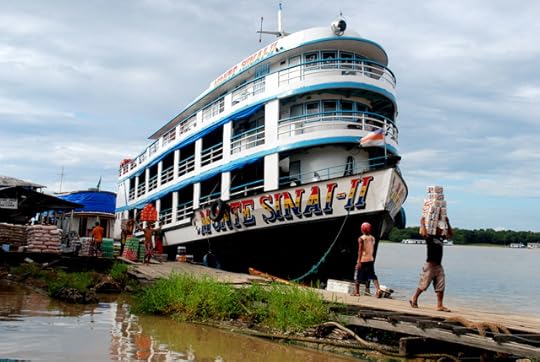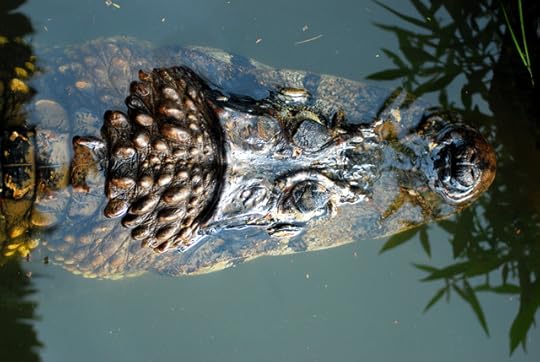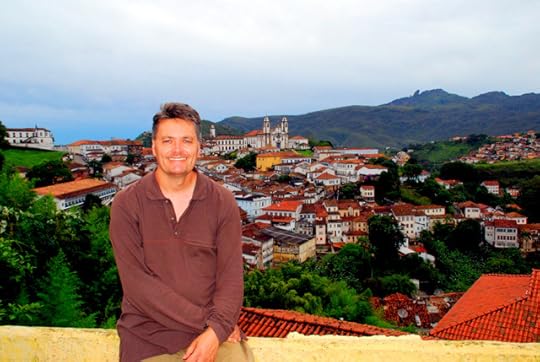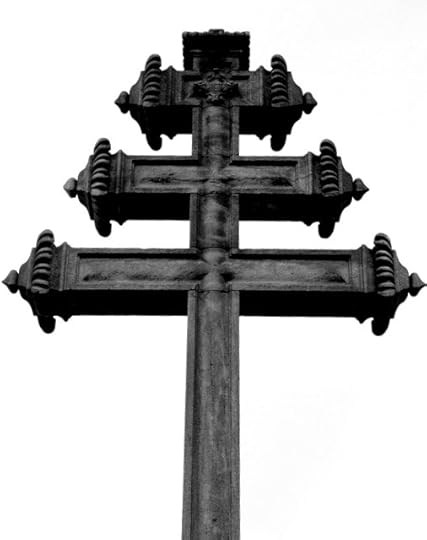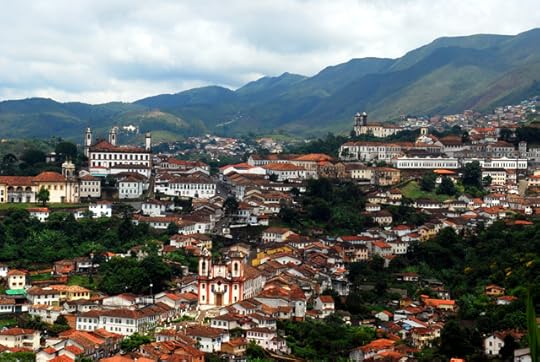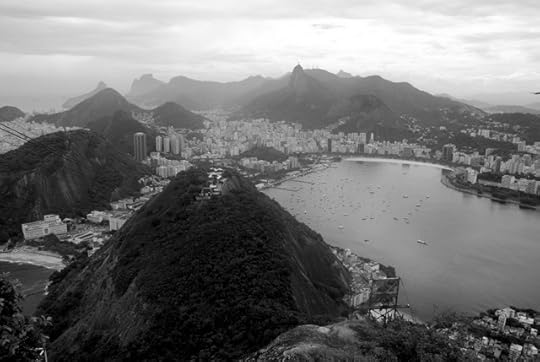Roderick Phillips's Blog, page 23
December 14, 2013
Rio Solimoes, Amazon, Brazil, Day 140
In Brazil the Amazon River is fed by two major tributaries. The northern tributary is the Rio Negro and the southern tributary is the Rio Solimoes. We are chugging gently down the Rio Solimoes aboard the MV Monte Sinai II and it is quite idyllic. Even dinner in Monte’s restaurant last night was surprisingly pleasant. It wasn’t fine dining by any stretch of the imagination, but it was authentic Amazon River food and after all isn’t that the point of travel: to experience the culture of the local people. The even better news is that our stomachs did not rebel so we’ll probably keep eating there.
Christi and I also slept remarkably well. I’m beginning to suspect we may be closet cruise addicts, although I don’t think we’ll be browsing the Royal Caribbean cruise catalog just yet (maybe in 30 years when we can no longer schlep around the world with our backpacks). We wake to find the boat docked in Coari. Much like Tefe there is frantic dockside activity as goods are loaded and unloaded and people alight and disembark. Then there are the curious voyeurs (ourselves included) who watch from the safety of cabin class while eating a breakfast of crackers and cold sardines. Initially dubious, Christi admitted the fishy tidbits were de-licious.
Unfortunately the rain that began last night is still with us, so rather than huddle on the main deck (under cover) watching hazy Brazilian TV we relax on our bunks with a good book – the perfect accompaniment to a lazy cruise down the Amazon. Christi is reading John Grisham, while I thoroughly enjoy the Dan Brown novel Deception Point.
The main meals are on deck 2 – hammock class (as opposed to deck 3, which is cabin class). There’s a generous buffet lunch of delicious roast chicken, rice, beans and salad. Later we treat ourselves to a few cold sodas and a few caramel sweets from the rudimentary onboard convenience store. The proprietor will even make you a hamburger, if you wish.
Our second major port of call is Codajas, where the madness along the dockside is, if anything, worse than ever. People and good are trying to get on and off at the same time, while hawkers attempt to peddle their wares to the captive audience. It’s all good fun. Tonight we enjoy a truly magnificent sunset over the café-au-lait colored waters of the Rio Solimoes while we eat another fine dinner in Monte’s restaurant. For once we’re hoping to arrive late tomorrow, as lazy days on the Amazon are just too much fun!
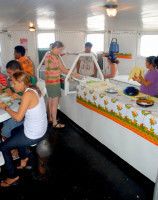
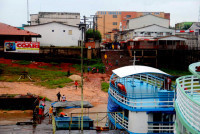
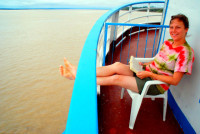
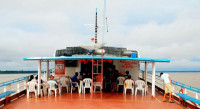
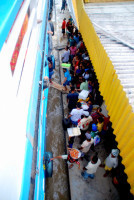

Blog post by Roderick Phillips, author of Weary Heart, a gut-wrenching, heart-wrenching, laugh-wrenching tale
The post Rio Solimoes, Amazon, Brazil, Day 140 appeared first on Roderick Phillips.
December 13, 2013
On the Amazon River, Brazil, Day 139
Our time at Mamirauá has fairly flown by and we’re down to our last short hike to a lily pond. Off the water and away from the lodge, wildlife photography is very challenging because the jungle canopy is so damn dense and the animals have such good camouflage. Of course it’s during this last and shortest hike when we finally see a 3-toed sloth. I get one shot off before he lazily merges back into the canopy again and is lost forever. Challenges with photography aside, the opportunity to spend even a few days in such a pristine part of the Amazon rain forest has been a rare and wonderful experience.
Christi and I have chosento return to Manaus by boat, a regular working boat rather than a dedicated cruise ship, but nevertheless this will be our version of an Amazon River cruise. It’s a 36-hour journey, which will be long enough to get a taste for life on the river, but not long enough to get bored. We could have undertaken longer trips from Belem or Porto Velho to Manaus, but the journey from Tefe to Manaus fits into our schedule just perfectly.
Having said that we are disappointed to leave Mamiraua. We pack reluctantly, say goodbye to Eduardo and Pedro, and then take the speedboat back along the maze of waterways to Tefe. From there we are transferred to the docks and our ride, the MV Monte Sinai II. Our cabin (we are of course going first class, which is a step up from hammock class, although those among you who vacation on cruise liners would be horrified by the conditions and limited amenities). Our cabin is on deck 3 (no times wasted on fancy deck names here in the Amazon!) in the bow; officially we’re ‘suite 8′.
The boat does not depart until 6 pm giving us 6 hours to kill. And being delicate foreigners we’re advised to buy provisions from the local grocery store since the boat food may be inedible. We scramble to purchase water, tinned meats, bread, crackers and Pringles. Return to the harbor to find our boat… gone, taking our backpacks with it. Not again, surely? Have we learned nothing since that far off day on the Ecuador-Peru border where our bus disappeared in a cloud of dust with our packs in the hold? Frantic questions to anyone who can understand us reveals that the boat has not left Tefe, but has simply moved out into the river to allow another boat to dock. Relax brother, the locals say, Monte will return soon. We smile unconvincingly and wait nervously until Monte does indeed return (yay!) and when it does we board quickly and don’t leave again.
From the safety of the boat, we watch the frenetic pace of human endeavor as rippling muscles unload endless cases of beer, soft drinks, and just about everything else Tefe needs to survive (there being no road links). As this is the dry season, trucks drive through soft sand to the docked boats, but get continually stuck and have to be dug out. Finally, at 6.45 pm , the horn sounds and we slip silently out into the lazy waters of the Amazon River. Our first major stop will be Coari at some point during the night. But for now, the sun is setting and Christi and I do finally begin to relax. Life on the Amazon River is magical.
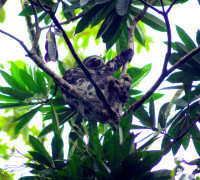

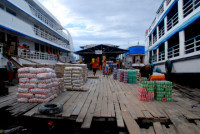
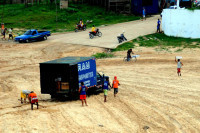

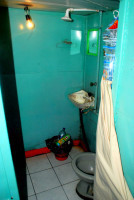
Blog post by Roderick Phillips, author of Weary Heart - a gut-wrenching, heart-wrenching, laugh-wrenching ride
The post On the Amazon River, Brazil, Day 139 appeared first on Roderick Phillips.
December 12, 2013
Mamiraua Lake, Day 138
Another walk in the woods to begin the day. We even clamber up to a viewing platform, although the builders must have have been incredibly optimistic people as the platform is in the middle of impentrable jungle!
With little action on dry land we take to the boats in the afternoon to visit Mamiraua Lake. We stop frequently to gawk at black-collared hawks, black hawks, cormorants, anhinga, white-necked herons, ringed kingfishers, egrets, monkeys, black caiman and pink river dolphins. Sadly, the much-anticipated sunset over Mamiraua Lake is lost beneath coal-black skies. It’s an hour by boat from the lake back to the lodge and the boat is at full throttle as we try to outrun the approaching thunderstorm. The weather front moves with alarming speed, however, and within 30 minutes we are drenched from head to foot. It’s not called the rainforest for nothing!
An interesting point about the wildlife that live in the flooded rainforest is that to be permanent residents they need to know how to swim and climb trees. Sloths, monkeys, and even jaguars are adept at this, but not so deer, capybara etc. so you don’t see them here. Also because the soil in the rainforest is not that deep, trees have a shallow but extensive root system, including massive buttress roots.
After another excellent dinner we are given a lecture on jaguars. Remarkably they are plentiful at Mamiraua, although frustratingly invisible. Researchers are using collars to monitor the movement of jaguars. They believe the males flee the flooded sections of the rainforest during the rainy season as some sort of survival instinct, while females stay to nurture their young and teach them how to climb trees (and no, I don’t have a photograph of this!). One potential commercial application of this research is to use these same tracking collars to enable tourists to view wild (albeit it collared) jaguars.
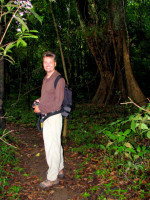

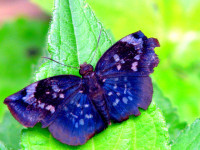
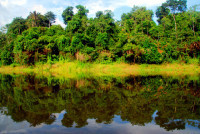
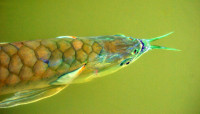

Blog post by Roderick Phillips, author of Weary Heart a gut-wrenching, heart-wrenching, laugh-wrenching story
The post Mamiraua Lake, Day 138 appeared first on Roderick Phillips.
December 11, 2013
Mamiraua Sustainable Development Reserve, Day 137
As usual with wildlife adventures you have to be up early to watch the critters at play, although judging by the noisy nighttime shenanigans the little buggers were partying all night. Aside from birdcalls, frog croaks, and the black caiman crashing into our lodge during its nocturnal hunting soirees, the curious pirarucu fish (a common and large beastie hereabouts) jumps out of the water every 30 minutes to breathe. Scientists believe this is an adaptation to the low oxygen tension in the water. It has even developed its swim bladder into essentially, a lung. The pirarucu can grow up to 3m in length and weigh up to 200 kg. Jumping pirarucu have even been known to knock fishermen out of their boats, occasionally causing them to drown. So beware, the Mamiraua Sustainable Development Reserve is a dangerous place in and out of the water.
Our first hike today is a 2-mile 3-hour walk through pristine flooded rainforest. Currently (September to March) it’s the dry season and we can walk the trail, but during the rainy season (April to August) the water levels rise 30 feet and this same excursion would be made by boat. Our lodge floats on the river for a very good reason! Let me start by saying that wondering about in the depths of the pristine Amazonian wilderness is an amazing experience, but it is also a challenging environment with high temperatures and incredible humidity. The animals know this, of course, and are undoubtedly holed up in some cool nook well away from curious visitors and their itchy camera fingers. Sloths are supposedly common, but even they shun the chance to feature on the cover of ‘Furry Friends – International edition’. The Mamiraua staff are determined to show us more wildlife, however, and rouse Christi and I from our siesta to slog through an afternoon hike. We do spot a chestnut-eared aracari (a member of the toucan family) low in the branches of a tree, but the remainder of our wildlife encounters are distant views of spider monkeys, capuchin monkeys, and uakari monkeys high up in the canopy. And my philosophy is that if you can’t photograph the little buggers, then it doesn’t count.
After my experiences in the Esteros del Ibera (I’m still itching by the way) the prospect of another night safari fills me with dread, especially the part where ravenous biting insects attack me again. This time, however, it’s not the biting insects that I’m concerned about, but the abundance of creepy crawlies. They may not be giants, but they are fearless and they scare the bejesus out of me. My dreams tonight are fraught with images of killer bugs from outer space swarming all over my body!

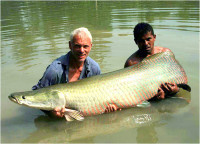
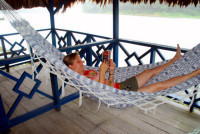
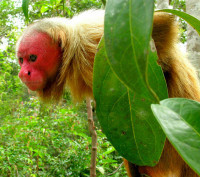
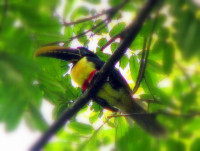
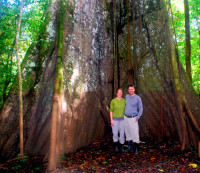
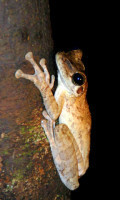
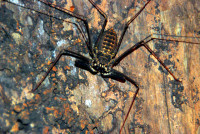
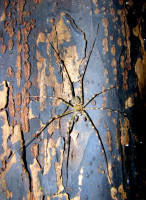
Blog post by Roderick Phillips, author of Weary Heart – a gut-wrenching, heart-wrenching, laugh-wrenching story
The post Mamiraua Sustainable Development Reserve, Day 137 appeared first on Roderick Phillips.
December 10, 2013
The Amazon, Brazil, Day 136
It’s a 90-minute flight with TRIP airlines from Manaus to the port town of Tefé in the heart of the Amazon. We’re met at the airport and whisked away in an air-conditioned SUV to the dockside to continue our journey by private boat. Ironically, outside of town there are no roads, so everything including the SUVs are brought in by air or water! We are accompanied to Mamiraua by Eduardo who is beginning a two-year position to study the economic sustainability of the reserve. It’s fascinating to watch the lives of the locals along the banks of the mighty Amazon River. It’s all so deliciously decadent.
An hour after leaving Tefe (and having negotiated a maze of waterways, sometimes at quite alarming speeds) we arrive at the Uakari Floating lodge, which, as the name implies, is built on the water – one of the many tributaries of the Amazon in fact. We are in the depths of the rainforest, a long, long way from civilization. If anything goes wrong out here, it will be a shaman not westernized medicine that saves us. Our rooms at the lodge are clean and rustic and surrounded by wildlife, including a 10-foot long black caiman sunbathing in the shallows right outside our door. Which makes us think twice before taking a night-time stroll or taking a dip in the refreshing, yet lethal waters, of the Amazon River.
Our first excursion is a canoe ride around the area. The wildlife if prolific: kingfishers, ani, anhinga, hawks, herons, and the massive flying fish known as the pirarucu (or arapaima, the largest freshwater fish in South America). And as we are the only guests at the lodge currently, our visit is about as exclusive as it’s possible to get. We have dinner (rice, beans, chicken, fish, manioc, fresh juice) with Eduardo and the resident naturalist, Pedro, who explains that the reserve covers 22,000 square miles of flooded forest and wetlands. Christi and I enjoy the sounds of the jungle as we ease to sleep in our very comfortable beds. We are in a special place and it is a privilege to be here.
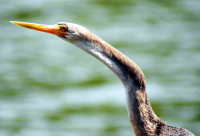

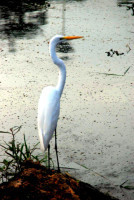
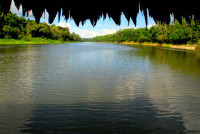
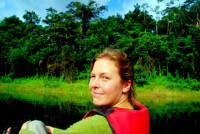

Blog post by Roderick Phillips, author of Weary Heart – a gut-wrenching, heart-wrenching, laugh-wrenching tale
The post The Amazon, Brazil, Day 136 appeared first on Roderick Phillips.
December 9, 2013
Ouro Preto, colonial gem, Day 135
Christi and I roam around Ouro Preto one last time this morning, soaking up the atmosphere, poking around yet another church (Igreja Nossa Senhora do Carmo), and generally enjoying this idyllic colonial gem. We leave Ouro Prêto with regret. I wish we’d had more time to explore and the weather had been kinder. However, our schedule is pretty packed from now on and we need to keep moving. And today is a busy moving day, as we head to one of the most iconic destinations in the world, the Amazon rain forest – which is one journey we’re not willing to do by bus! So it’s back to the air (and we call ourselves backpackers!). We begin with a 2.5-hour bus ride from Ouro Prêto to the central station in Belo Horizonte. From there it’s another 30 minutes by bus to the airport.
The largest city in Amazonia and the gateway to the jungle is Manaus, but we cannot fly direct from Belo Horizonte. Instead we head south, back to Sao Paulo. It’s a 90-minute TAM flight, which is short on legroom and cheap on the food (TAM must use the American airline industry as a model). We arrive in the megalopolis amid a gathering storm that puts our flight to Manaus in jeopardy. We wait nervously, eating dinner at the ubiquitous Bob’s Burgers and trying not to contemplate an enforced overnight stay in Sao Paulo.
Brazilians are nothing if not optimistic, however, and our connecting flight to Manaus takes off on time into turbulent skies. It’s a similarly basic flight with no frills such as personal space or edible food and due to time zone differences between the two cities our flight is an hour longer than expected. What joy! From Manaus airport we taxi to the Hostel International, which is centrally located and cheap. We will be here for a total of ten hours before continuing on into the depths of Amazonia tomorrow. Perhaps we’re tired after a long day of travel or maybe it’s the ongoing dreary weather, but Christi and I just don’t get a good vibe about this hostel (or its apathetic staff).
I’m such a lame backpacker that I go to sleep dreaming of luxury hotels – and ruing the fact I never get to stay in them.
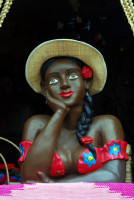
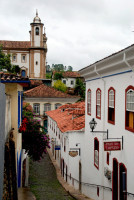

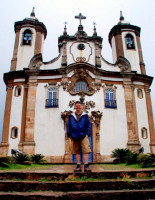
Blog post by Roderick Phillips, author of Weary Heart - a gut-wrenching, heart-wrenching, laugh-wrenching ride
The post Ouro Preto, colonial gem, Day 135 appeared first on Roderick Phillips.
December 8, 2013
Eastern parish, Ouro Preto, Day 134
After a leisurely breakfast we throw on our wet-weather gear and continue exploring. Today we are going further afield, to the Eastern parish for more church spotting. We walk the soggy cobblestone streets, occasionally scratching our heads as we take wrong turnings (a combination of bad maps and poor street signage) until after a rather steep hike (up and down) we make it to Igreja de Santa Efigerua dos Pretos. It was built between 1742 and 1749 by slaves, for slaves, and gives spectacular views of colonial Ouro Prêto. The church is in the midst of restoration work, but we persuade the restorers to allow us a quick peek (and a few photos) of the beautiful artwork. Further out still (in the non-touristy part of town) lies the simple design of Capela do Padre Faria. Built between 1701-04, it’s one of the oldest chapels in the town, and is dedicated to the priest (Father Faria) who was chaplain of the expedition that founded Ouro Prêto in 1698.
Not wishing to negotiate the steep hills back from the Eastern parish to central Ouro Prêto again, we jump aboard a local bus. And the journey is like something out of the Wacky Races as the bus careens menacingly down cobblestone streets and around blind corners with Dick Dastardly driving and his side-kick, Muttley, acting as the conductor. It’s a relief to reach Tiradentes square in one piece and only moments before the latest monsoon begins. We watch the downpour from a pretty little restaurant near the square. I think the management of this restaurant must be fans of the British TV show, Fawlty Towers, because the sausages Christi orders morphs into roasted tomatoes, while my hot chocolate arrives with a frosting of cream cheese rather than whipped cream – bizarre.
After the rain subsides we explore Igreja de Sao Francisco de Asis. The façade of this church was carved by that man Aleijadinho again. Indeed, this church is regarded as his masterpiece as he evolved the highly ornate baroque style into an exuberant and overindulgent style known as rococo. And even on this cold wet day, it brings joy to the heart.

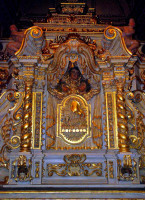
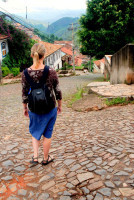
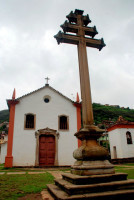

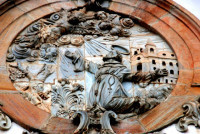
Blog post by Roderick Phillips, author of Weary Heart, a gut-wrenching, heart-wrenching, laugh-wrenching story
The post Eastern parish, Ouro Preto, Day 134 appeared first on Roderick Phillips.
December 7, 2013
Ouro Preto, Brazil, Day 133
The bus ride from Rio de Janeiro to Ouro Preto is…unpleasant. The seats are uncomfortable, there’s no food, and not a steward in sight. All we have is a very argumentative driver and a long bumpy road. We do, however, arrive on time. I manage some sleep, but Christi does not because her shoulders are painfully sunburned. Quite how she managed this in Rio is beyond me. Unfortunately, we have not escaped the rain and I slosh through puddles lugging both packs (one on my front and the other on my back) to a nearby hostel, which has fantastic views over Ouro Preto.
The town, set among magnificent, brooding mountain scenery, is almost a living museum of 18th century life in colonial Brazil. The hilly cobblestone streets are steep and in wet weather (i.e. now) perilously slippery. While much of the gold extracted from Ouro Preto left the town, enough wealth survived to build a vast array of mostly baroque churches. Churches in Ouro Preto are as common as village pubs in England. Before embracing so much religious architecture and iconography, however, we’re drawn to a sidewalk café in Tiradentes square where we warm up with a few mugs of delicious hot chocolate.
Much like Potosi in Bolivia, Ouro Preto owes its very existence to the mining industry (and both towns share a similarly unpalatable record regarding the use of slave labor). It’s also possible to visit a mine in Ouro Preto, but there’s zero chance of us doing that again.
Ouro Preto actually means black gold and refers to the fact that huge deposits of oxidized (black) gold were found here in the early 18th century. At the height of the boom, half of all the world’s gold production originated here, helping to fund the Portuguese empire (and because of its trade links with England, the Industrial Revolution). Local resentment at ever increasing taxes levied by Portugal eventually lead to revolution under the leadership of the poet-dentist Joaquin Jose da Silva Xavier (nicknamed Tiradentes – the tooth-puller). Unfortunately the rebellion (Inconfidencia Mineira) was crushed and Tiradentes publically executed in Rio in quite barbaric fashion. Ironically, he is now revered as one of Brazil’s earliest patriots. These events are recounted at the Museo da Inconfidencia, which we visit first in hopes of avoiding the worst of the ongoing downpour.
The rain hereabouts is nothing if not tenacious, however, and is still happily falling as we lose ourselves among the many baroque churches in Ouro Preto, beginning with the Matriz de nossa senhora do Pilar, which is the richest, most lavishly decorated church in Ouro Preto, containing more than 400 kg of gold. Next we visit Igreja nossa senhora das Merces de Cima. The façade of this church is attributed to Aleijadinho, a remarkable sculptor and architect who, as a young man, lost the use of his hands (possibly due to leprosy). However, with a hammer and chisel strapped to his arms he continued carving exquisite pieces and became very successful. The last church we visit (before getting churched out) is the Igreja de Sao Francisco de Paula, which has a great location overlooking the town. It was the last church built during the colonial period.
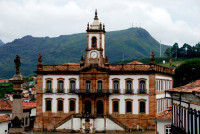
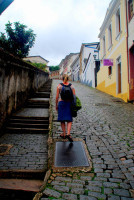
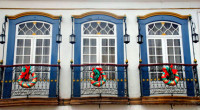
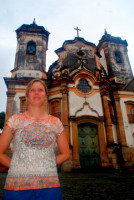
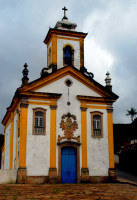
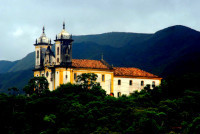
Blog post by Roderick Phillips, author of Weary Heart – a gut-wrenching, heart-wrenching, laugh-wrenching tale
The post Ouro Preto, Brazil, Day 133 appeared first on Roderick Phillips.
December 6, 2013
Sugar Loaf Mountain, Rio de Janeiro, Day 132
An overnight bus ride to Ouro Prêto beckons. I’m so over these damn night buses, but needs must when the devil drives or some such rot. Moreover, the bus does not leave until 11.30 pm while we have to check-out from the hotel Apa at noon, so we have nigh on 12 hours walking the streets of Rio ahead of us. Just great.
We have grand plans to do something impressive today, but the ongoing moody weather is not cooperating. An 8-minute scenic helicopter ride around Christ the Redeemer costs US$75pp while hang-gliding over Rio is similarly exploitative at US$75pp, but if you can’t see any of the views then what’s the point? Ultimately, we return to Sugar Loaf Mountain because it’s the easiest and cheapest of the options we were considering.
It takes two cable car rides to reach the top of Sugar Loaf mountain. The first ride takes us as far as Morro da Urca (215m). We’re surprised to find a helicopter pad here with scenic tours available. And despite the inclement weather, departures are booked solid for the next three hours. What to do? What to do? It’s an expensive once-in-a-lifetime experience with great photo ops, but the skies are grey and the light is gloomy, making the perfect photo hugely unlikely. We contemplate our options over a truly miserable lunch, but one that is enlivened mightily by the arrival of tiny a Marmoset monkey who tries repeatedly to steal my banana. In the end we agree to share it.
Later, we take the second cable car to Pao de Acucar (Sugar Loaf Mountain at 396m) which offers panoramic views over Guanabara Bay, downtown Rio, the beaches, and tiny Christ the Redeemer atop Corcovado. We can at least see everything, but finally decide to forgo the scenic helicopter ride.
Having extracted as much entertainment value as possible from Sugar Loaf Mountain, we return to Copacabana and the inevitable internet café. Christi uploads photos and I plan some future adventures, while outside rain lashes the most famous beach in the world.
With little enthusiasm we finally taxi to the bus station in preparation for 8 hours of semi-cama hell.


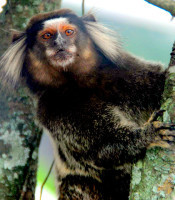
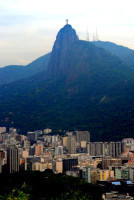
Blog post by Roderick Phillips, author of Weary Heart - a gut-wrenching, heart-wrenching, laugh-wrenching ride
The post Sugar Loaf Mountain, Rio de Janeiro, Day 132 appeared first on Roderick Phillips.
December 5, 2013
Ipanema, Rio de Janeiro, Day 131
The weather is trying to be happy today, which is enough to entice the Cariocas (natives of Rio) to the beach. And it’s not long before Christi and I join them. This morning we’re going to explore the slightly more upmarket Ipanema beach (and can’t you just hear that classic song in your head: Tall and tan and young and lovely, the girl from Ipanema goes walking…) before returning to Copacabana for the big game. It’s going to be a tough day walking along beautiful beaches and beside a bevy of beautiful girls (and guys, Christi says) – but someone has to do it, right?
Beach life is an eclectic mix of showmanship (there are all manner of beach games on the go, including pickup football, volley ball, foot volley, net-less tennis and surfing) and people watching (tanned hunks with rippling muscles amuse Christi while thong-bikini clad girls preening, posing, and pouting enthrall me). And all humanity is represented here: favela kids to families and hawkers to the rich and beautiful. Although as one commentator put it, no one knows how rich you are when you’re wearing a pair of speedos. Most of all, though, everyone seems to be having a good time, including me as I capture some of those Ipanema babes on film.
At the far end of Ipenema the name switches to Leblon, which is the truly posh end of town. A few blocks back from the beach is a shopping mall, which is all decked out with Christmas decorations and high-end retailers. We stay for a cheap fast-food lunch so we can enjoy some serious air-conditioning and then hightail it back to Copacabana for the game.
We find a bar full of cheering, singing Flamengo fans (wearing the team’s classic red and black football shirts) and join in the pre-game festivities. Fan fever plummets to unimaginable depths, however, as Grêmio take an early lead and I share their pain…and then their passion…and, eventually, the redemption of Flamengo as they come from behind to win 2-1, sending their fans into a Carnaval-like frenzy, as they win their first national title in a generation. Their celebrations continue long into the night. And certainly long after Christi and I are tucked up as snug as bugs in a rug at the hotel Apa!

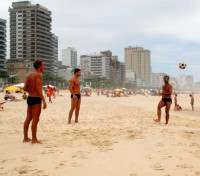



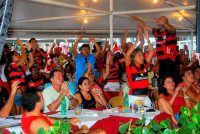
Blog post by Roderick Phillips, author of Weary Heart, a gut-wrenching, heart-wrenching, laugh-wrenching, ride
The post Ipanema, Rio de Janeiro, Day 131 appeared first on Roderick Phillips.


